Hunters, conservationists partner to protect Formosan black bears
Since 2014, 18 bears have been captured in traps, with six found dead, according to the non-governmental organization, the Taiwan Black Bear Conservation Association. While most of the bears were released, some suffered major injuries caused by old-fashioned hunting tools such as metal snares, which can break bones or severe paws or toes as the bear struggles to break free.
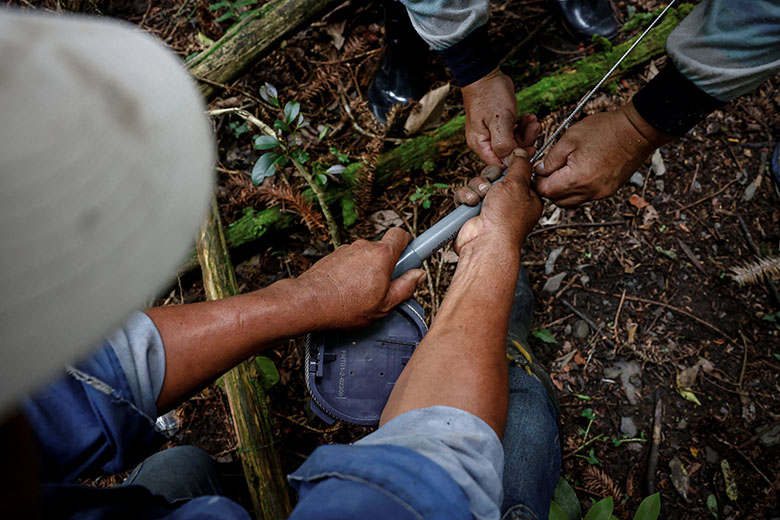
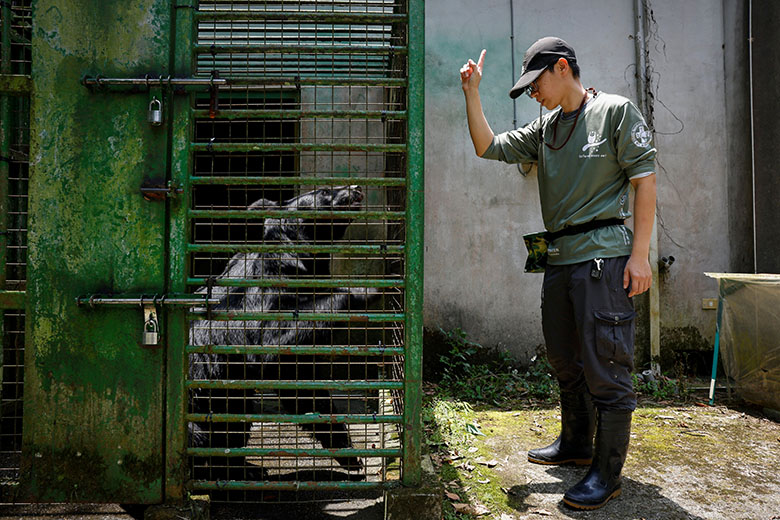
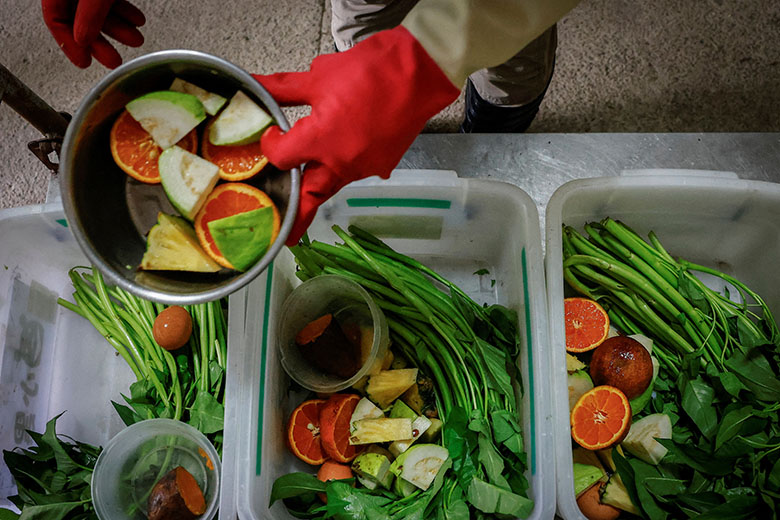
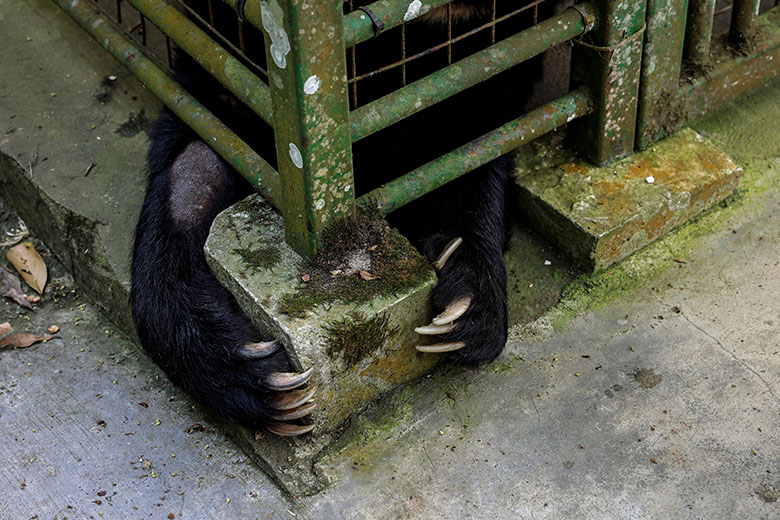
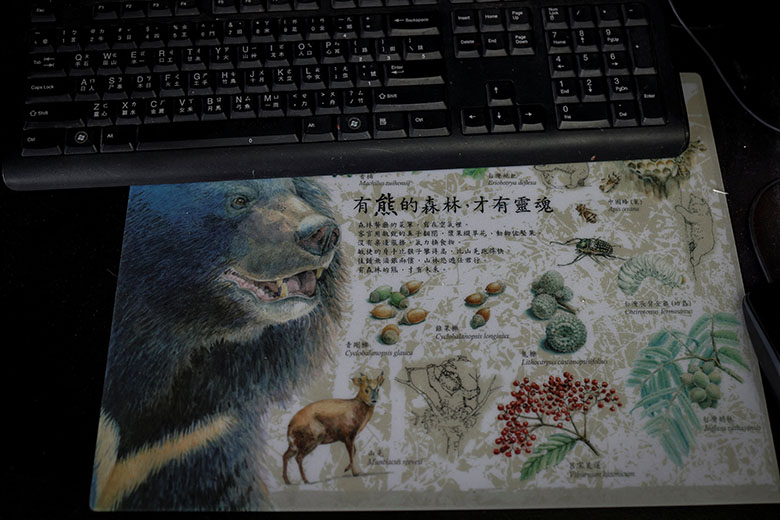
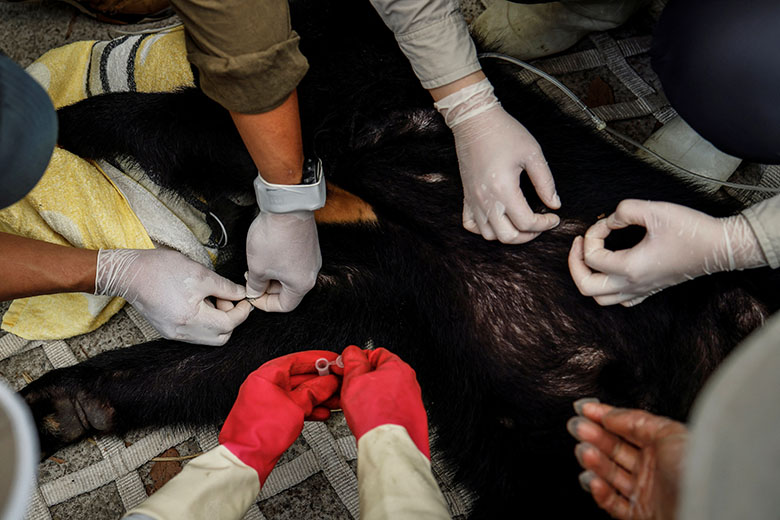

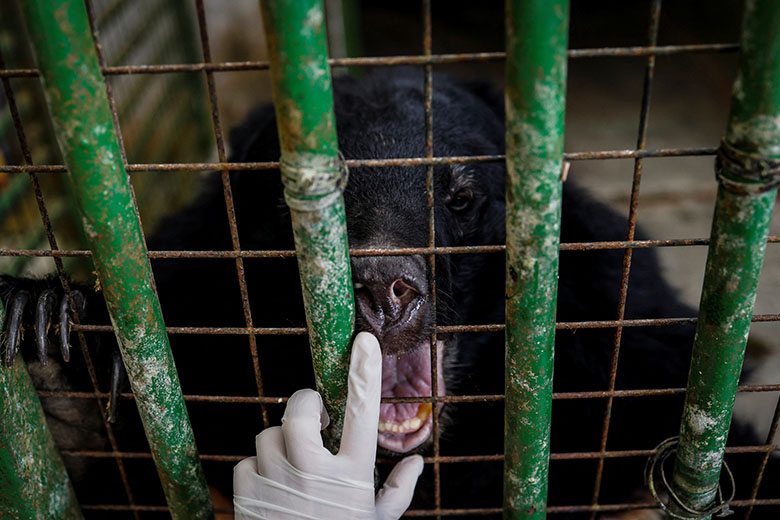
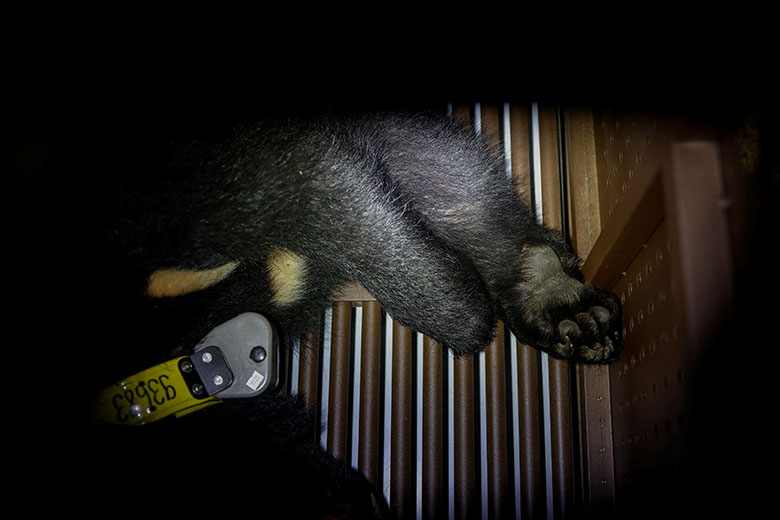
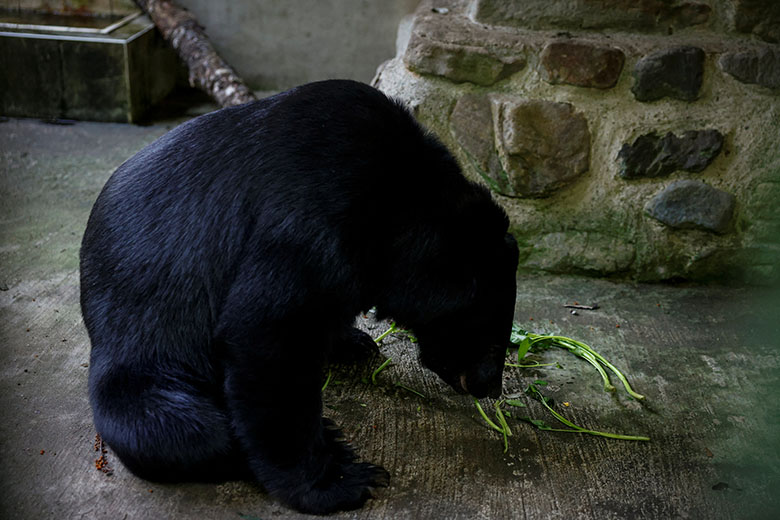
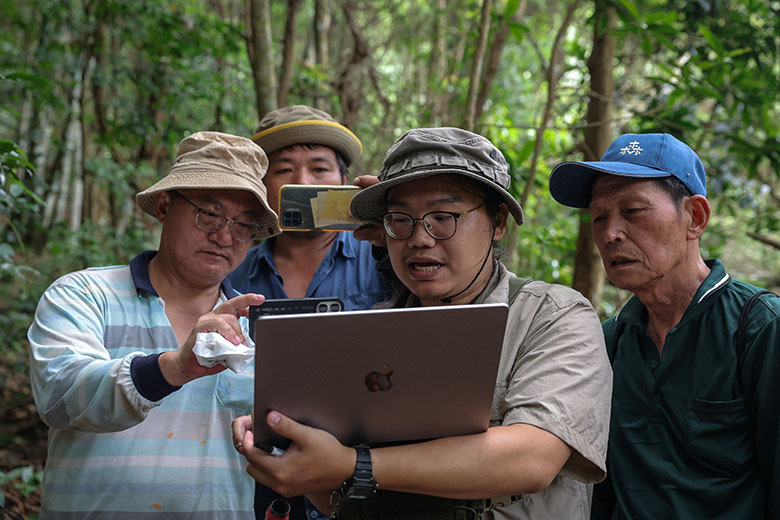
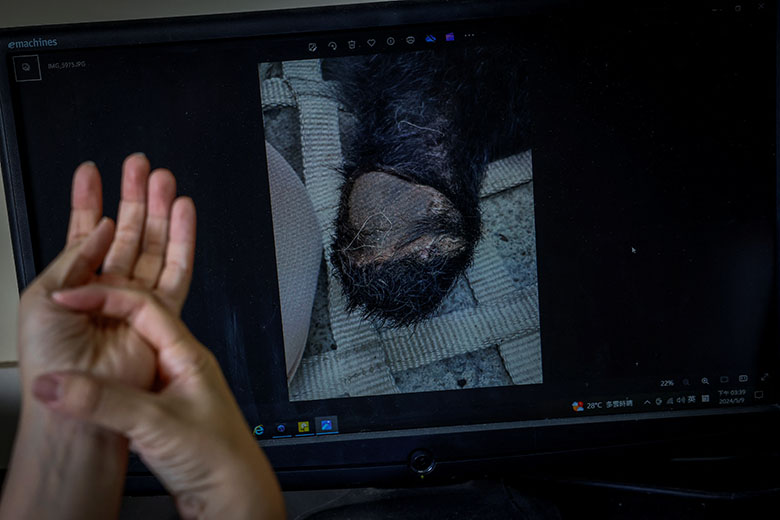
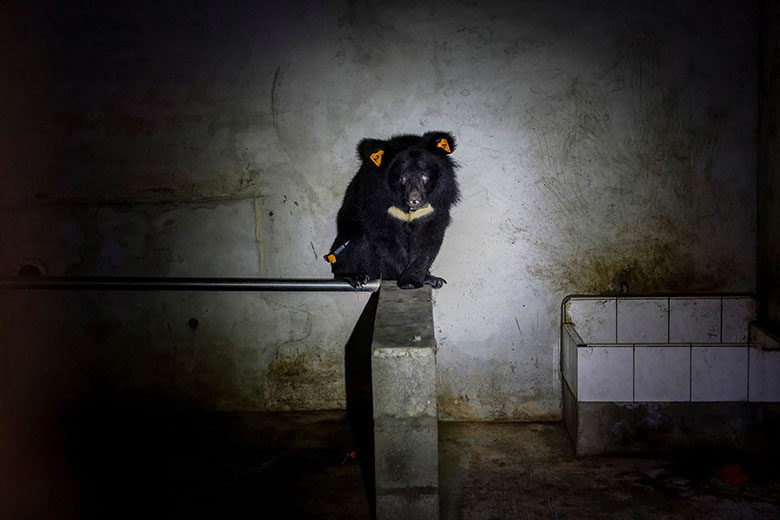
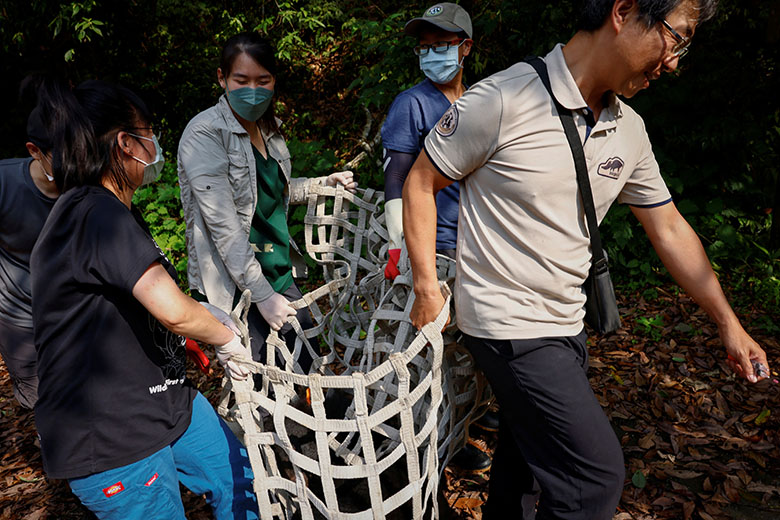
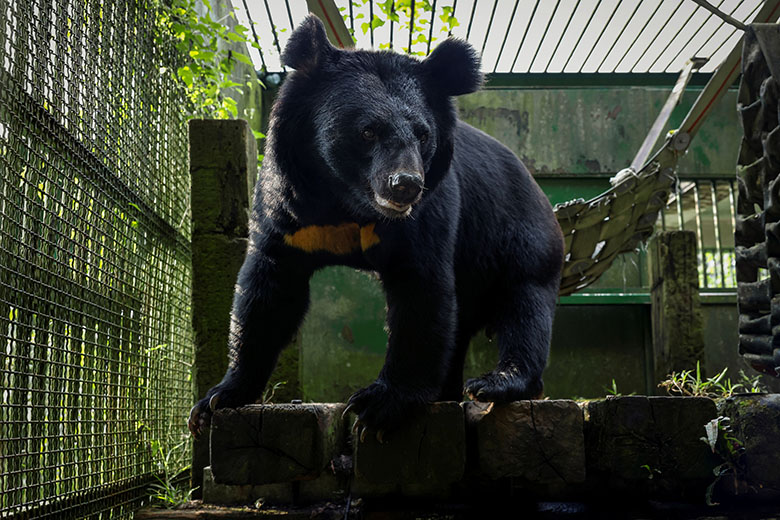
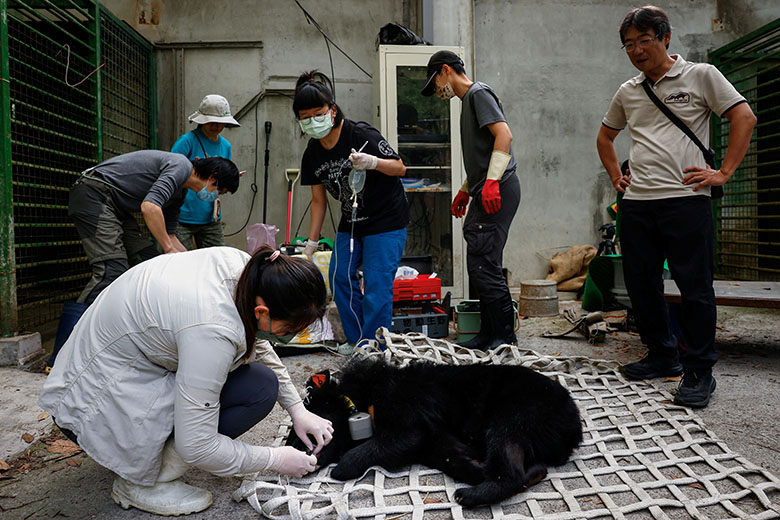
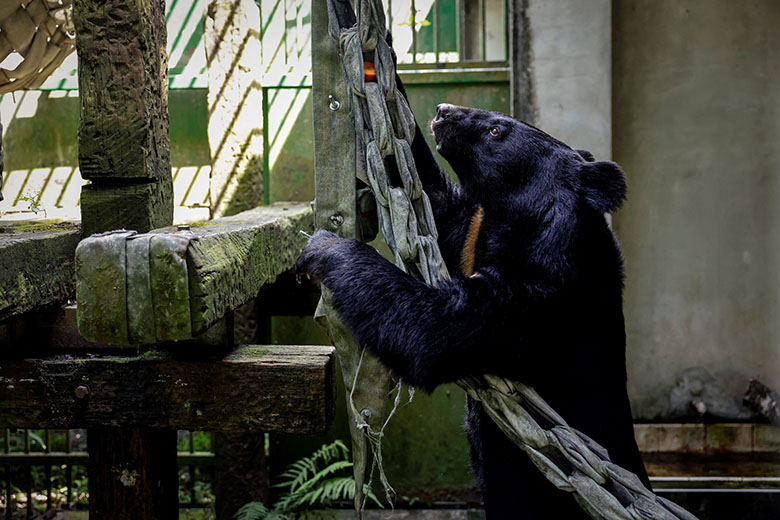

















REUTERS
Pan Wen-Ming (right), 51, an ethnic Amis hunter and guava farmer, and another hunter demonstrate to Reuters reporters how to set up traditional traps using materials found in the forest, in Taichung, Taiwan, July 11. "It tries to minimize (bear injuries) while letting the elders and hunters of our tribe still hunt for prey," Pan Wen-Ming said.REUTERS
Animal caretaker Lai Chiao Ling, 32, trains a Formosan black bear, to keep them active and to allow staff to perform easier check-ups, at the government-run bear shelter Wushikeng Research Center in Taichung, Taiwan, May 9. Since 2014, 18 bears have been captured in traps, with six found dead, according to the non-governmental organisation, the Taiwan Black Bear Conservation Association. While most of the bears were released, some suffered major injuries caused by old-fashioned hunting tools such as metal snares, which can break bones or severe paws or toes as the bear struggles to break free.REUTERS
Animal caretakers prepare food for the Formosan black bears at the government-run bear shelter Wushikeng Research Center in Taichung, Taiwan, May 9. Since 2014, 18 bears have been captured in traps, with six found dead, according to the non-governmental organization, the Taiwan Black Bear Conservation Association. While most of the bears were released, some suffered major injuries caused by old-fashioned hunting tools such as metal snares, which can break bones or severe paws or toes as the bear struggles to break free.REUTERS
A Formosan black bear trains to reach out its arms for injections and check-ups at the government-run bear shelter Wushikeng Research Center in Taichung, Taiwan, May 9. Since 2014, 18 bears have been captured in traps, with six found dead, according to the non-governmental organisation, the Taiwan Black Bear Conservation Association. While most of the bears were released, some suffered major injuries caused by old-fashioned hunting tools such as metal snares, which can break bones or severe paws or toes as the bear struggles to break free. "Steel snares bounce off from the ground and tighten up their limbs when triggered by animals," said Liu Li-wen, 36, an animal caretaker. "That's why we are seeing many bears with broken paws or toes in the wild. It's likely that they were entangled by traps, broke free by themselves and survived."REUTERS
A mouse pad displaying information on the Formosan black bear can be seen at Lu Li-wen's workspace, at the government-run bear shelter Wushikeng Research Center in Taichung, Taiwan, May 15. Since 2014, 18 bears have been captured in traps, with six found dead, according to the non-governmental organisation, the Taiwan Black Bear Conservation Association. While most of the bears were released, some suffered major injuries caused by old-fashioned hunting tools such as metal snares, which can break bones or severe paws or toes as the bear struggles to break free. "Steel snares bounce off from the ground and tighten up their limbs when triggered by animals," said Liu Li-wen, 36, an animal caretaker. "That's why we are seeing many bears with broken paws or toes in the wild. It's likely that they were entangled by traps, broke free by themselves and survived."REUTERS
Vets remove fleas from Ziman, a one-and-a-half-year-old rescued Formosan black bear, as they prepare him for his release the following day, at the government-run bear shelter Wushikeng Research Center in Taichung, Taiwan, May 15. Ziman was found dead in the central mountains only weeks after his release, with authorities unable to determine the cause of death. "This is not the end of the story. We will not stop what we are doing," said Lai Chiao Ling, one of Ziman's caretakers. "At least there are still bears in the wild for us to save."REUTERS
People take photos of Ziman, a one-and-a-half-year-old rescued Formosan black bear, in a cage before releasing him in Taichung, Taiwan, May 16. Ziman was found dead in the central mountains only weeks after his release, with authorities unable to determine the cause of death. "This is not the end of the story. We will not stop what we are doing," said Lai Chiao Ling, one of Ziman's caretakers. "At least there are still bears in the wild for us to save."REUTERS
An animal caretaker trains a Formosan black bear to open its mouth in order to perform daily checkups, at the government-run bear shelter Wushikeng Research Center in Taichung, Taiwan, May 15. Since 2014, 18 bears have been captured in traps, with six found dead, according to the non-governmental organisation, the Taiwan Black Bear Conservation Association. While most of the bears were released, some suffered major injuries caused by old-fashioned hunting tools such as metal snares, which can break bones or severe paws or toes as the bear struggles to break free.REUTERS
Ziman, a one-and-a-half year old rescued Formosan black bear, sleeps as his caretakers ahead of his release into the wild, at the government-run bear shelter Wushikeng Research Center in Taichung, Taiwan, May 15. Ziman was found dead in the central mountains only weeks after his release, with authorities unable to determine cause of death. "This is not the end of the story. We will not stop what we are doing," said Lai Chiao Ling, one of Ziman's caretakers. "At least there are still bears in the wild for us to save."REUTERS
A Formosan black bear eats inside its enclosure at the government-run bear shelter Wushikeng Research Center in Taichung, Taiwan, May 9. Since 2014, 18 bears have been captured in traps, with six found dead, according to the non-governmental organisation, the Taiwan Black Bear Conservation Association. While most of the bears were released, some suffered major injuries caused by old-fashioned hunting tools such as metal snares, which can break bones or severe paws or toes as the bear struggles to break free. "Steel snares bounce off from the ground and tighten up their limbs when triggered by animals," said Liu Li-wen, 36, an animal caretaker. "That's why we are seeing many bears with broken paws or toes in the wild. It's likely that they were entangled by traps, broke free by themselves and survived."REUTERS
Chen Han-Sheng (center), 30, a wildlife conservation worker, Pan Wen-ming (second to the left), 50, an ethnic Amis hunter and guava farmer, and other hunters the footage from cameras they set up in the mountains in Taichung, Taiwan, July 12. Taiwanese hunters and conservationists are teaming up to protect the Formosan black bear, with only a few hundred estimated still in the wild, by designing new traps which will not amputate limbs if they are accidentally caught in a snare. "Because of its small size, and because the bear's palm is very wide, you see that it (the bear paw) will not fall in completely when stepped on like this," explained Pan Wen-ming. "It tries to minimise (bear injuries) while letting the elders and hunters of our tribe still hunt for prey."REUTERS
Animal caretaker Liu Li-wen, 36, shows a picture of the left paw belonging to Ziman, a one-and-a-half-year-old rescued Formosan bear, after amputation at the government-run bear shelter Wushikeng Research Center in Taichung, Taiwan, May 9. "Steel snares bounce off from the ground and tighten up their limbs when triggered by animals," said Liu Li-wen, who oversaw Ziman's recovery in a government-run bear shelter in the mountains of Taichung. "The snares turned tighter and tighter as the animal struggled. When blood circulation stopped, his entire paw turned necrotic," she said. Vets had to cut most of the paw off to save the cub's life after two months of treatment.REUTERS
Ziman, a one-and-a-half-year-old rescued Formosan bear, stands in a room after being hit with a tranquilizer dart, ahead of preparations for his release the following day, at the government-run bear shelter Wushikeng Research Center in Taichung, Taiwan, May 15. Ziman was found dead in the central mountains only weeks after his release, with authorities unable to determine the cause of death. "This is not the end of the story. We will not stop what we are doing," said Lai Chiao Ling, one of Ziman's caretakers. "At least there are still bears in the wild for us to save."REUTERS
Veterinarians and animal caretakers carry Ziman, a rescued one-and-a-half-year-old Formosan bear, during preparations for his release the following day, at the government-run bear shelter Wushikeng Research Center in Taichung, Taiwan, May 15. Ziman was found dead in the central mountains only weeks after his release, with authorities unable to determine the cause of death. "This is not the end of the story. We will not stop what we are doing," said Lai Chiao Ling, one of Ziman's caretakers. "At least there are still bears in the wild for us to save."REUTERS
A Formosan black bear stays at its enclosure at the government-run bear shelter Wushikeng Research Center in Taichung, Taiwan, May 15. Since 2014, 18 bears have been captured in traps, with six found dead, according to the non-governmental organisation, the Taiwan Black Bear Conservation Association. While most of the bears were released, some suffered major injuries caused by old-fashion hunting tools such as metal snares, which can break bones or severe paws or toes as the bear struggles to break free.REUTERS
Veterinarians and animal caretakers surround Ziman, a one-and-a-half-year-old rescued Formosan bear, as they prepare him for his release the following day, at the government-run bear shelter Wushikeng Research Center in Taichung, Taiwan May 15. Ziman was found dead in the central mountains only weeks after his release, with authorities unable to determine the cause of death. "This is not the end of the story. We will not stop what we are doing," said Lai Chiao Ling, one of Ziman's caretakers. "At least there are still bears in the wild for us to save."REUTERS
A Formosan black bear plays inside an enclosure at the government-run bear shelter Wushikeng Research Center in Taichung, Taiwan, May 9. Since 2014, 18 bears have been captured in traps, with six found dead, according to the non-governmental organisation, the Taiwan Black Bear Conservation Association. While most of the bears were released, some suffered major injuries caused by old-fashioned hunting tools such as metal snares, which can break bones or severe paws or toes as the bear struggles to break free. "Steel snares bounce off from the ground and tighten up their limbs when triggered by animals," said Liu Li-wen, 36, an animal caretaker. "That's why we are seeing many bears with broken paws or toes in the wild. It's likely that they were entangled by traps, broke free by themselves and survived."











